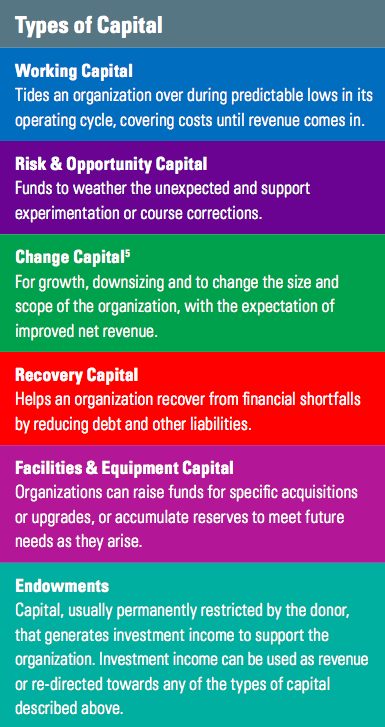
Photo by 401(k) 2013, CC BY-SA
As I was saying, there are plenty of people who want to give your organization money. Seriously. Lots of it. There is, of course, a catch. You have to give it back.
With interest.
Understandably, this stops most nonprofit executive directors in their tracks. It’s no mean feat to raise the prodigious amounts of grant funding needed to run one of these juggernauts as it is. It requires stamina, persistence, a lot of friends, and just a touch of maniacal charm. Now, the frazzled executive asks, you want me to spend a huge amount of time raising money I have to pay back?
Well, yes. And here’s why:
- You can raise even greater sums of money this way. Social impact capital tends to be allocated in chunks of $250,000 to $1 million in my experience. It’s not unusual to hear of much larger commitments, like the recent $7.2 million Bloomberg ponied up in the Goldman Sachs/MDRC social impact bond transaction. Indeed, the use of social impact capital for credit enhancements in a larger, structured fund is growing more and more common. In part, this is because social impact capital intends to achieve benefits at scale, a reality which has its pluses and minuses.
- Social impact capital can play an unusual role in project, program, or organizational development in that it sits between grant capital and purely commercial finance, typically offering lower borrowing costs, a greater appetite for risk, and more flexible terms. You can do some interesting stuff with it if you think about it. But you have to think about it.
- Social impact capital presents a trend in giving, not a fad. I’ve written in previous posts about its provenance in microfinance and its evolution to today, and in general it appears to me that more folks are getting in on the action. As I noted in my prior blog, those folks with social impact capital are eager for deals and a chance to prove new structures and strategies.
I hope this is all reason enough, but let me add one more very important one: you’re supposed to do it. For all their talk about the importance of leadership and investing in innovation, all resource providers (foundations, social impact investors, even commercial lenders) are followers. They react to market trends that appear on the ground, the cumulative energy and activity made manifest by the things you tinker with and learn to do better in your daily work of achieving your mission. People with money need you to tell them where, when, and how to, you know, stick it.
Let’s Make a Deal
In my previous post I wrote about finding new ways to draw linkages between your existing and potential capital plans. Let’s go back to that chart I stole from the lovely folks at the Nonprofit Finance Fund.

What I like about this chart is it lays out uses of capital directly related to the activity being supported and illustrates that capital is carved into buckets for a reason. If you want to start a new program or project, you know that you will need some change capital to invest in the fleshing out of the enterprise. After that, you’ll want to access risk capital or facilities capital to lay the foundation and build things out, then working capital to keep the lights on, and so forth.
So here’s my question to you: when was the last time you sat down with your financial manager and thought through the developmental phases of key new developments and actually considered the various tranches of capital you would need? Putting aside physical infrastructure (affordable housing, a school, a community center, new offices), I suspect many nonprofits aren’t in the habit of staging their capital needs.
And this is the point if you’re smart enough to think up a major cost savings initiative or revenue generating activity, then you’re definitely smart enough to think much more aggressively about how you can use grants, social impact capital, and commercial capital in combination to see you through. What’s more, many complex nonprofits have some ability to tier capital already at their disposal or through their stakeholders into credit enhancements that will provide incentives for other investors.
I hope to write more about the most recent entrant into this rubric, the concept of “change capital.” (Credit goes to folks like Rodney Christopher over at the Heron Foundation who have been doing some terrific thinking and organizing around this idea.)
I’ve been asked to pull together a panel for an upcoming social impact conference in Austin, Texas, in early 2014 and I hope this will be the focus. In the mean time, stay strong, stay dapper.




Comments